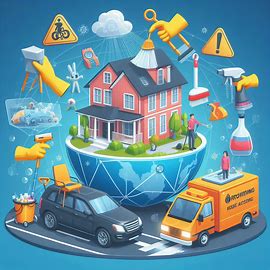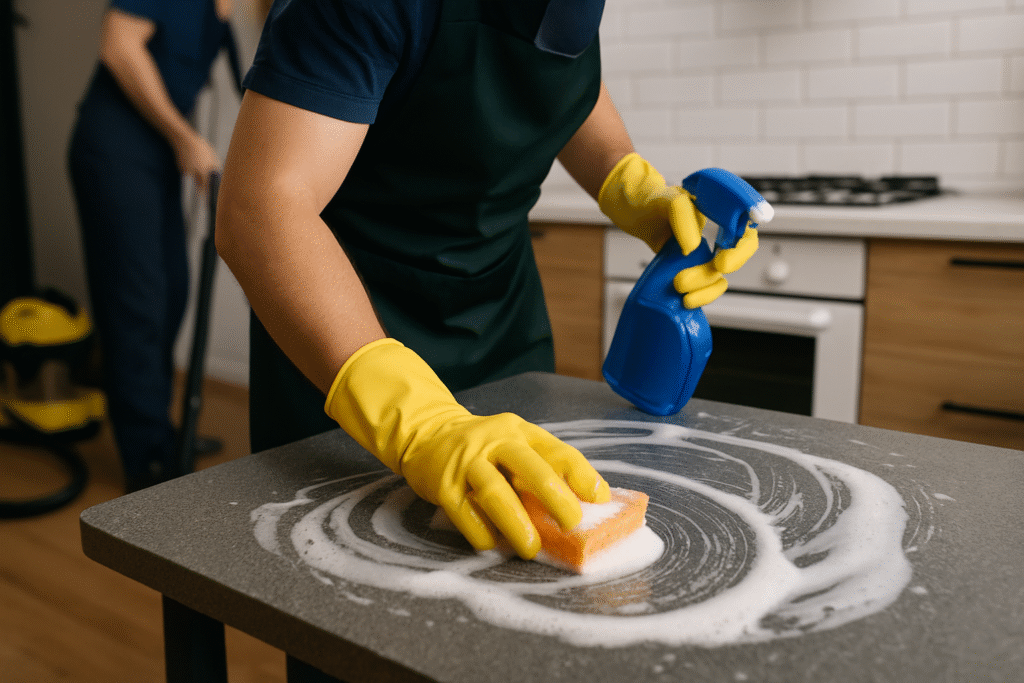The Role of Cleaning in Home Safety: Preventing Accidents

A clean home is more than just visually appealing; it plays a vital role in ensuring the safety and well-being of its occupants. While the aesthetic benefits of a tidy living space are undeniable, the significance of cleanliness extends far beyond appearances. Regular cleaning and maintenance are crucial in preventing accidents that can lead to injuries or even more severe consequences. This article explores how cleanliness in the home directly contributes to safety and highlights the key areas where vigilance is necessary.
Eliminating Tripping Hazards
One of the most common causes of home accidents is tripping over objects left on the floor. Toys, shoes, electrical cords, and other items can create obstacles that are easy to overlook, especially in a cluttered environment. Regularly tidying up and ensuring that walkways and floors are clear of debris can significantly reduce the risk of trips and falls.
In particular, attention should be paid to areas with high foot traffic, such as hallways and staircases. These areas should be kept free of clutter and should be regularly swept or vacuumed to prevent the accumulation of dirt or small objects that could cause someone to slip. Rugs and carpets should also be secured properly to avoid them bunching up and creating a tripping hazard.
Preventing Slips and Falls
Slippery surfaces in the home are another major cause of accidents. Wet floors, particularly in bathrooms and kitchens, can be treacherous. Ensuring that spills are cleaned up immediately and that non-slip mats are used in areas prone to water accumulation can help prevent these types of accidents.
Regular cleaning of tiles, especially in wet areas, is essential. Soap scum, mould, and mildew can make surfaces slick and dangerous. A regular schedule of scrubbing and disinfecting not only keeps these areas hygienic but also safe to walk on.
Reducing Fire Hazards
A clean home is also less likely to experience a fire. Dust accumulation, particularly on electrical appliances and outlets, can be a fire hazard. Regularly dusting and wiping down surfaces, including behind large appliances, can reduce the risk of electrical fires.
Kitchens, where a significant number of household fires start, require particular attention. Grease and grime build-up on stovetops, ovens, and range hoods can easily ignite. Regular cleaning of these areas, as well as ensuring that flammable items like tea towels are kept away from heat sources, is essential for fire prevention.
Minimising the Risk of Poisoning
Proper cleaning also plays a critical role in preventing accidental poisoning, particularly in homes with young children. Household cleaners, pesticides, and other chemicals should be stored safely out of reach, ideally in a locked cupboard. However, even when these items are stored safely, residue left on surfaces can be dangerous. Regularly wiping down surfaces, particularly in the kitchen where food is prepared, can help minimise the risk of ingestion of harmful substances.
Additionally, keeping the home free from pests such as rodents and insects is essential, as they can carry harmful bacteria and viruses. Regular cleaning, combined with proper food storage and waste disposal, can help keep pests at bay and maintain a healthy living environment.
Maintaining Indoor Air Quality
Dust, mould, and pet dander can significantly reduce indoor air quality, leading to respiratory problems and allergic reactions. Regular vacuuming, dusting, and cleaning of air filters can help maintain good air quality and reduce the likelihood of health issues related to poor air quality.
Mould, in particular, can pose serious health risks, especially for those with asthma or allergies. Keeping areas like bathrooms, kitchens, and basements dry and well-ventilated, along with regular cleaning, can prevent mould growth and maintain a safe living environment.
Creating a Safe Environment for Children and the Elderly
For homes with children or elderly individuals, maintaining cleanliness is especially important. Children are naturally curious and may put objects in their mouths, increasing the risk of choking or poisoning if the environment is not properly maintained. Similarly, elderly individuals may have reduced mobility or vision, making them more susceptible to accidents in a cluttered or unclean environment.
Regular cleaning routines that prioritise the removal of hazards and the maintenance of hygiene are essential in creating a safe environment for these vulnerable groups.
Cleaning is not just about making a home look good; it is a fundamental aspect of home safety. By maintaining a clean and organised living space, homeowners can significantly reduce the risk of accidents such as trips, slips, fires, and poisoning. Regular cleaning routines, combined with proper storage and maintenance practices, are key to ensuring that the home remains a safe haven for all its occupants. In essence, a clean home is a safer home, where the risk of accidents is minimised, and the well-being of its residents is prioritised.




